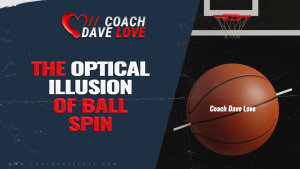This blog started with a conversation I had with an NBA assistant coach who was curious about why I add variability to my free throw practice, especially since free throws are one of the few situations in basketball that aren’t variable during a game. He questioned why I would create changing conditions during practice for something that seems consistent in games.
I explained to him that there’s actually more variability than we might see at first glance. Factors such as how early in the game it is, how fresh the player is feeling, if they’re dealing with a minor injury, or even the level of anxiety they’re experiencing can all subtly affect a free throw. And these are just the factors we can’t easily measure. To provide a clearer picture, I later sent him information on measurable factors—like temperature, humidity, altitude, and ball weight—that also contribute to free throw variability.
I hope this helps explain why it’s essential to incorporate much more variability into free throw practice. Let’s explore some of these factors and how they can significantly alter the trajectory of a basketball.
ALL FREE THROWS ARE NOT CREATED EQUAL
At first glance, a free throw seems like one of the most controlled aspects of basketball. The player is standing still, 15 feet away from the basket, with the same release angle and force every time, right? However, that’s only part of the story. Environmental factors play a much larger role than we typically realize, and each gym introduces different variables that affect how the ball behaves in the air.
For instance, a shot in a cold, humid gym at sea level will behave differently from a shot in a hot, dry, high-altitude gym. Here’s a breakdown of how these factors create significant variability in the ball’s flight.
TEMPURATURE
In colder environments, the air is denser, which increases the drag force acting on the ball. This means that the ball will slow down faster, resulting in it traveling a shorter distance than it would in warmer environments. Imagine a player practicing free throws in a gym that also hosts hockey games, where the temperature is kept low due to the ice rink under the floor, even if the outdoors are warm. The cold air in the arena creates more resistance, and the ball slows down sooner, reducing its travel distance.
In contrast, a hot gym, like one in Phoenix during the summer, has less dense air, which means less drag on the ball. The basketball will experience less deceleration as it flies through the air, allowing it to maintain its speed for longer and travel farther.
Humidity
Humidity doesn’t have as large an impact as temperature, but it still plays a role. High humidity environments decrease air density slightly because water vapor is lighter than nitrogen and oxygen. As a result, humid air provides less drag on the basketball than dry air. However, the effect of humidity on drag is relatively small compared to temperature and altitude.
In drier environments, such as Salt Lake City, the air is denser, which increases drag on the ball. When combined with other factors, the difference in ball trajectory can become significant.
ALTITUDE
One of the most impactful environmental factors is altitude. At higher altitudes, like Denver’s “Mile High” elevation (1,600 meters above sea level), the air is much less dense than it is at sea level. This means that the basketball experiences far less air resistance during flight, allowing it to travel farther with the same force and release angle.
In contrast, in a gym near sea level, the denser air creates more resistance, shortening the distance the ball can travel. A player might find that shots in low-altitude gyms require slightly more effort to cover the same distance.
BALL WEIGHT
Another often overlooked factor is how the ball’s weight changes during the course of a game. Over time, as the ball absorbs moisture from the air or sweat from players, it can become slightly heavier. Even a small increase in mass can affect the shot.
A heavier ball will experience less deceleration from air resistance due to its increased inertia. This means that, in theory, a heavier ball will travel farther under the same conditions because it isn’t slowed down as much by drag. However, the player may need to apply more force to shoot the heavier ball with the same speed as a lighter one, making it harder to maintain consistency.
For example, in a cold, humid gym where the ball absorbs moisture throughout the game, the ball becomes heavier, and players might find it harder to achieve the same accuracy they had earlier in the game when the ball was dry and lighter. This is another reason why players must be trained to adapt to changing conditions, even during the course of a single game.
A REAL-WORLD EXAMPLE
Let’s explore two specific situations to highlight the discrepancy in how far a basketball travels under different conditions:
- Scenario 1: A cold, humid, low-altitude gym at sea level that also hosts hockey games (15°C, 90% humidity, sea level). The game is in its final minutes, and the basketball has absorbed moisture from both sweat and the humid air, making it heavier.
- Scenario 2: A hot, dry, high-altitude gym in Denver (30°C, 20% humidity, 1,600 meters above sea level). The game has just started, and the basketball is dry and lighter than it will be later in the game.
In the first scenario, the combination of dense, cold air and increased ball weight due to moisture results in significantly higher drag on the ball. The heavier ball experiences less acceleration due to gravity, but more force is required to get it to travel the same distance. Meanwhile, in the second scenario, the warmer air, lower humidity, and high altitude reduce air resistance and allow the lighter ball to travel farther and more easily.
We calculated the drag force in both cases:
- In the cold, humid gym with a heavier ball, the drag force is approximately 0.682 N.
- In the hot, dry, high-altitude gym with a lighter ball, the drag force drops to about 0.585 N.
This difference in air resistance and ball weight leads to a significant disparity in how far the ball travels. When shot with the same force, velocity, and angle, the basketball in Denver will travel 14.7% farther than in the cold, humid, sea-level gym. Over the standard 15-foot distance of a free throw, this equates to a 2.2-foot (0.67-meter) difference in how far the ball travels.
CONCLUSION: VARIABILITY IS KEY TO MASTERY
This example illustrates that even when we think the conditions are constant, they rarely are. Temperature, humidity, altitude, and even the weight of the ball all play a role in determining how far the basketball will travel, even when a player shoots with the same form and force. What’s more, this analysis only covers the environmental factors. We haven’t even touched on other real-world variables, such as the player’s energy level, muscle fatigue, or slight changes in ball pressure and grip during the game.
As coaches, it’s crucial to embrace this variability. Rather than expecting players to perform under identical conditions every time, we should train them to adapt. Introducing variability in practice (such as adjusting distance, arc or velocity of the shot) can help players develop the adaptability necessary to master their free throw under any conditions. In the end, mastery isn’t about making the same shot every time—it’s about adapting to make the shot in any situation, because no two situations are exactly the same.



